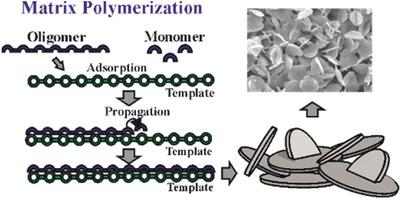当前位置:
X-MOL 学术
›
Macromol. Chem. Phys.
›
论文详情
Our official English website, www.x-mol.net, welcomes your feedback! (Note: you will need to create a separate account there.)
Simultaneous Stereocomplexation of Polylactides during Polymerization of d‐LA in the Presence of a PLLA Template
Macromolecular Chemistry and Physics ( IF 2.5 ) Pub Date : 2020-03-23 , DOI: 10.1002/macp.201900571 Marek Brzeziński 1 , Adam Michalski 1 , Bartłomiej Kost 1 , Marta Socka 1 , Marcin Florczak 1 , Grzegorz Łapienis 1 , Tadeusz Biela 1
Macromolecular Chemistry and Physics ( IF 2.5 ) Pub Date : 2020-03-23 , DOI: 10.1002/macp.201900571 Marek Brzeziński 1 , Adam Michalski 1 , Bartłomiej Kost 1 , Marta Socka 1 , Marcin Florczak 1 , Grzegorz Łapienis 1 , Tadeusz Biela 1
Affiliation

|
Matrix polymerization is frequently used to obtain different materials with control over the microstructure and molecular weight of the final products; however, it is never employed to obtain stereoregular polylactide. Therefore, here, l‐lactide polymerization is initiated with butanol or methoxy poly(ethylene glycol). Subsequently, the hydroxyl end groups of the obtained poly(l‐lactides) (PLLAs) are blocked with acetic anhydride to avoid stereoblock formation during matrix polymerization in the presence of PLLA as a template. The polymerization is carried out in tetrahydrofuran at 80 °C under vacuum. During the course of the process, the simultaneous stereocomplexation of a PLLA matrix with growing poly(d‐lactide) chains is observed, leading to the formation of petal‐in‐petal microparticles. This approach can provide a tool for designing stereocomplexed particles with different morphologies and allows for fine‐tuning of their properties.
中文翻译:

在存在PLLA模板的d-LA聚合过程中,聚丙交酯同时进行立体复合。
基质聚合通常用于获得不同的材料,并控制最终产品的微观结构和分子量。但是,从未用于获得立体规则的聚丙交酯。因此,在这里,1-丙交酯聚合用丁醇或甲氧基聚(乙二醇)来启动。随后,将获得的聚(l-丙交酯)(PLLA)的羟基端基用乙酸酐保护,以避免在以PLLA为模板的基质聚合过程中形成立体嵌段。聚合在真空中于四氢呋喃中于80℃下进行。在此过程中,随着增长的聚(d观察到丙交酯链,导致形成花瓣间的微粒。这种方法可以为设计具有不同形态的立体复合粒子提供工具,并可以对其特性进行微调。
更新日期:2020-03-23
中文翻译:

在存在PLLA模板的d-LA聚合过程中,聚丙交酯同时进行立体复合。
基质聚合通常用于获得不同的材料,并控制最终产品的微观结构和分子量。但是,从未用于获得立体规则的聚丙交酯。因此,在这里,1-丙交酯聚合用丁醇或甲氧基聚(乙二醇)来启动。随后,将获得的聚(l-丙交酯)(PLLA)的羟基端基用乙酸酐保护,以避免在以PLLA为模板的基质聚合过程中形成立体嵌段。聚合在真空中于四氢呋喃中于80℃下进行。在此过程中,随着增长的聚(d观察到丙交酯链,导致形成花瓣间的微粒。这种方法可以为设计具有不同形态的立体复合粒子提供工具,并可以对其特性进行微调。



























 京公网安备 11010802027423号
京公网安备 11010802027423号